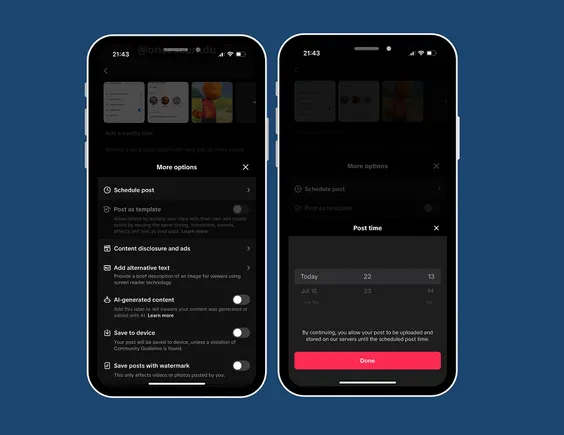Continuous SEO: Can You “Complete” SEO?
In this guide, we’ll answer just that and share some top tips for implementing a continuous SEO strategy. The answer, in short, is almost always no. SEO, in nature, is a continuous strategy. You can’t just turn it on...

Once you achieve your SEO goals and have a sustainable stream of organic traffic, is it time to refocus budgets to other channels? Can you really “complete” SEO, or should it be continuous? In this guide, we’ll answer just that and share some top tips for implementing a continuous SEO strategy. The answer, in short, is almost always no. SEO, in nature, is a continuous strategy. You can’t just turn it on and off like a tap in the same way you can with PPC, for example. But of course, like all things in SEO, it’s much more nuanced than a simple yes or no. With that in mind, here are the most common reasons as to why you should continue to invest in SEO as an ongoing strategy. In 2022 alone, there were over 10 algorithm updates confirmed by Google. In reality, there were likely many more updates that weren’t publicly announced by Google too. These many updates and tweaks to the algorithm provide new ways to impress Google. Most of these updates focus on rewarding quality content within the search rankings. For example, Google recently updated its quality rater guidelines by adding an extra “E” into E-A-T, making it E-E-A-T. Besides making the acronym a bit more confusing to pronounce, it provides some extra opportunities to showcase quality. The additional “E” stands for experience, meaning Google is now taking into account whether the page is written by someone with personal experience on the respective topic. Google hasn’t directly told us that it uses this as a ranking signal. Instead, its quality raters look for examples of this in sites that rank as a means to measure the performance of its own ranking algorithm. That said, we absolutely know that Google is now taking “experience” more seriously and that its raters are looking for examples of it in content that is ranking well. So with that in mind, it’s a fair assumption that Google is looking to reward sites that showcase E-E-A-T in its rankings. Another example is Core Web Vitals. In May 2021, Google introduced Core Web Vitals as a ranking signal. Core Web Vitals are a set of technical page experience metrics measured via CrUX (Chrome User Experience Report) using real user data. Following this, Google has recently announced that it will update its CrUX ranking signals. From March 2024, Google will no longer be using FID (First Input Delay) as a ranking signal, replacing it with INP (Interaction to Next Paint). This provides new technical challenges that you’ll need to stay on top of. While Core Web Vitals are widely regarded as a minor ranking signal, you’ll certainly want to stay on top of these metrics. It could well be the difference between a page #1 and page #2 ranking for some of your most competitive keywords. With the algorithm being volatile at times and constantly evolving, SEO is not just about getting it right once. A page #1 ranking today could be a page #2 ranking overnight. Often enough, there’s almost always room to improve and gain more traffic via search terms that are super relevant to your website. After all, it’s pretty much impossible to rank #1 for every keyword you are targeting, even if you are Wikipedia. So there’s always room for growth. Even at Ahrefs, for example. The team is doing an incredible job at ranking in the top positions for relevant keywords. That said, even within the top traffic-driving keywords, there are always opportunities to improve. Often, these super important “money” keywords are your most competitive keywords, so keeping your content up to date and optimized is essential to maintaining and further improving on strong rankings. Beyond ranking in the top positions for your commercial keywords, there’s often so much opportunity to create and scale informational content. Earlier on, I mentioned the importance of showcasing E-E-A-T. Producing and scaling useful, relevant, and high-quality content is a great way to demonstrate experience, expertise, authority, and trust. You’d also be building up strong associations and topical authority to your niche in the eyes of Google. While this may seem complex, in principle, it’s simple. Let’s say you operate in the toy sector. You can show Google that your business is all about toys by providing useful guides to support your existing e-commerce landing pages. There is a wide range of content opportunities here; this could range from tips for cleaning your kid’s toys to reviewing the best storage solutions. Not only does this build relevant associations and topical authority within your niche in the eyes of Google, but you’ll also be putting your brand in front of potential future customers too. Another benefit to upper-funnel content is that you can raise brand awareness among potential customers. While they may not be looking to make a direct purchase straight away, you’ll be increasing the chances of them making that purchase with you in the future. In my previous article on fitting SEO into your marketing strategy, I used a kayak store as an example. A user searching “how to store a kayak” may consider purchasing a kayak in the future. If they find the guide to be useful and informative, this increases the chances of said user making that purchase through your store. In SEO, it’s easy to forget that it’s not just you going for growth via Google rankings. It’s highly likely that your competitors won’t be standing still. Complacency is a big danger. While you’ve slowed down, your competitors could be more active by: By just standing still, you could soon see your performance “fall backward” in what is a relatively volatile and often competitive channel. Let’s look at the position history for the keyword “life insurance” via Ahrefs’ Keywords Explorer as an example. Just over a period of 30 days, we’ve seen the top ranking change hands frequently across three competitors. Furthermore, we can see how volatile search rankings can be just by following the green line (newyorklife.com). This domain peaked in #1 before temporarily dropping to #7 within a couple of weeks. Depending on the needs and capabilities of your business, it may be time to optimize for new markets. Or if you already have an international SEO strategy, perhaps it’s time to double down on those secondary markets that may have been previously neglected. Given that international SEO is one of the most complex areas of SEO, it’s unsurprising that many websites struggle to rank in the top positions for their targeted keywords globally. You can quickly see how you and your competitors are performing globally by entering the respective domains into Ahrefs’ Site Explorer. Notice that your main competitor is receiving a lot more traffic from a certain country than you? This is likely worth a deeper investigation. It quite often turns out that your top SEO opportunity countries aren’t the ones that your business is prioritizing. If that is the case, this data is incredibly powerful and could form the business case to reprioritize and focus on new markets with SEO potential. We’ve established that you can’t just start and stop SEO and that a continuous SEO strategy is the way forward. A continuous SEO strategy can range from updating your old content to regularly updating your SOPs to form a more efficient and effective SEO process. Here are my top five tips for rolling out a continuous SEO strategy. Technical SEO is the crucial foundation of any SEO campaign. Given how big an impact one technical hitch could have on your rankings, adopting a proactive approach is essential. Sure, conducting a technical audit at the start of an SEO campaign is incredibly useful. However, I find the approach of only doing a technical audit once every six to 12 months as insufficient. In that interim period, one negative technical change may result in you scrambling to work out what caused a loss in rankings. With Ahrefs’ Site Audit, you can set your crawls to run on an automated schedule—be it a daily, weekly, or monthly audit. You can also schedule the exact time for the audit to run, meaning you’ll have the results from the audit ready at a time that suits you best. You’ll be able to compare your results against previous crawls too. So if you notice the number of errors is slightly higher than in recent audits, you’ll know a technical issue has crept in. I personally like to run these audits at least weekly with regular manual checks in between. This supports a proactive approach to SEO. It also means technical issues are captured as and when they happen, as opposed to several months down the line in a technical audit. A continuous SEO strategy doesn’t just require you to “do more SEO,” but also to “do SEO” more effectively. We just touched on how you can automate your technical auditing by scheduling that on Site Audit. This is a great start for making your SEO workflow more efficient, but we don’t have to stop there. Since ChatGPT was born into the world, I’m sure we’ve all been presented with the “top five ChatGPT prompts to automate your workflow.” I have no doubt we can all agree that the social media craze for ChatGPT prompts has diluted the conversation somewhat. To save you from the torture of reading these dreaded Twitter threads, Ahrefs’ Si Quan Ong has reviewed and shared some of the best ChatGPT prompts for SEOs and the ones you should avoid (no matter how many Twitter threads they appear in). One of my favorite ChatGPT prompts is to generate outlines for content. Ultimately, my final outline will always look nothing like the initial ChatGPT response. That said, I find this helps get those important “creative juices” flowing while I’m in that ideation phase. This leads to much more efficient production of content outlines. Keen to learn more about SEO automation? Check out Fraser McCulloch’s automation tips for these nine common SEO tasks. Content can naturally become outdated over time. And users can usually tell when an article feels old. If you wait too long to update your content, your competitors could have: Ultimately, it’s Google’s job to ensure users have a good experience when they click through to content via the search results. So if your competitors are doing a good job at keeping their content up to date and you are not, you’ll likely lose out in the rankings. Google uses a ranking factor called Query Deserves Freshness (QDF) to determine how fresh a piece of content should be in order to rank for a particular search term. This ranking signal is pretty much what it says on the tin. If Google determines that users are looking for fresh content in their searches, it will look to prioritize fresh content in the rankings. Google leans on news sites, blog posts, and search requests to determine when users are looking for fresh content in their searches. In 2007, Amit Singhal (former VP at Google) talked about this in an article for The New York Times: The QDF solution revolves around determining whether a topic is “hot.” If news sites or blog posts are actively writing about a topic, the model figures that it is one for which users are more likely to want current information. We shouldn’t interpret QDF as just applying to news items. What could seem like an “evergreen” keyword could soon need fresh content—should there be a strong rise in related news posts and skyrocketing search demand. To learn more, Ahrefs’ Josh Hardwick has a guide on implementing an SEO content republishing strategy. As the demands from users change over time, this is reflected in the queries they search for online. In turn, this means that new content opportunities will arise every now and then. You can stay on top of new content opportunities by: Ahrefs’ new Competitive Analysis tool is great for seeing what keywords your competitors rank for that you don’t. Start off by entering your domain as the target and then the domains of your competitors. In just a few clicks, you’ll be presented with a list of keywords that your competitors rank for (within the top 10 positions by default) where you don’t rank at all. I personally like to go one step further and set the “Target position” filter to “No position or custom” with a minimum ranking of 11. This means we’ll now be presented with a list of keywords that our competitors rank in the top 10 positions where we rank from page #2 or worse. This is super useful for staying on top of what content your competitors are rolling out and what keyword gaps you may need to jump on. Most SEOs would agree that effective monitoring and reporting are essential. That said, I believe it’s an area that can be done more effectively by many. One example is that many SEOs rely solely on Search Console to see how they are ranking for their top keywords. There’s no doubt Search Console is an incredibly useful source for reporting and should be included in reports. That said, I don’t see it as the most effective tool to measure ranking performance. Here’s why: A rank tracking tool like Ahrefs’ Rank Tracker is essential for daily ranking updates for your domain and your competitors. You’ll also benefit from useful metrics like share of voice and estimated traffic. To get started with Rank Tracker, simply set your location, enter your keywords from your own keyword lists, and hit “continue.” Don’t forget to include your competitors on the next step too. In no time, you’ll start to see ranking data pull through for your keyword list, such as the respective ranking positions and ranking URLs. Don’t forget to connect Ahrefs up to your custom SEO dashboards, whether that’s Looker Studio or through API calls. SEO, as an ongoing and continuous strategy, should be non-negotiable. As tempting as it may be to refocus budgets to other channels or rest on your laurels, complacency is a huge risk to organic performance. Implement a continuous SEO strategy by: Have any questions? Ping me on Twitter and let me know.
The algorithm doesn’t stand still


There’s always opportunity to improve


SEO is super competitive


It may be time to conquer new markets

1. Continuously monitor the technical health of your site

2. Automate repetitive tasks

3. Review and update existing content

4. Continue to look for new content opportunities




5. Monitor and review your performance frequently


Final thoughts

 Konoly
Konoly 
































